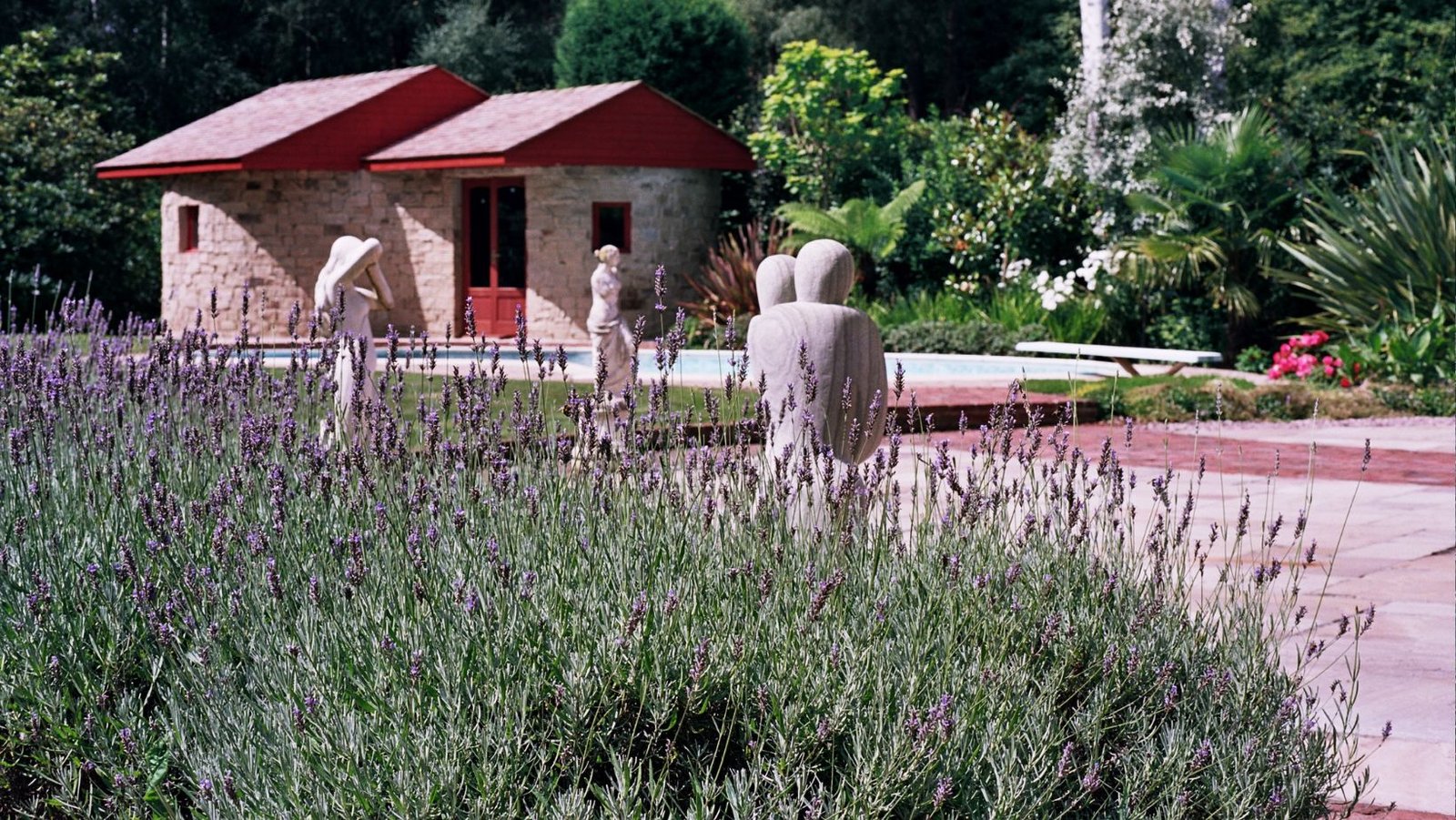
With heatwaves and hosepipe bans upon us, many homeowners are wondering how to keep their gardens thriving in the ever-changing climate. At GreenArt, we see water scarcity not only as a challenge, but also as an opportunity – to make gardens more resilient, sustainable, and beautiful even in dry conditions.
Water resilience is no longer just a nice-to-have, it’s becoming essential and it starts by working with water, not against it.
At GreenArt we’re inspired by the 4Rs of regenerative hydrology:
Retain, Recharge, Reuse, and Restore.
Here’s how you can apply these principles in your own garden.
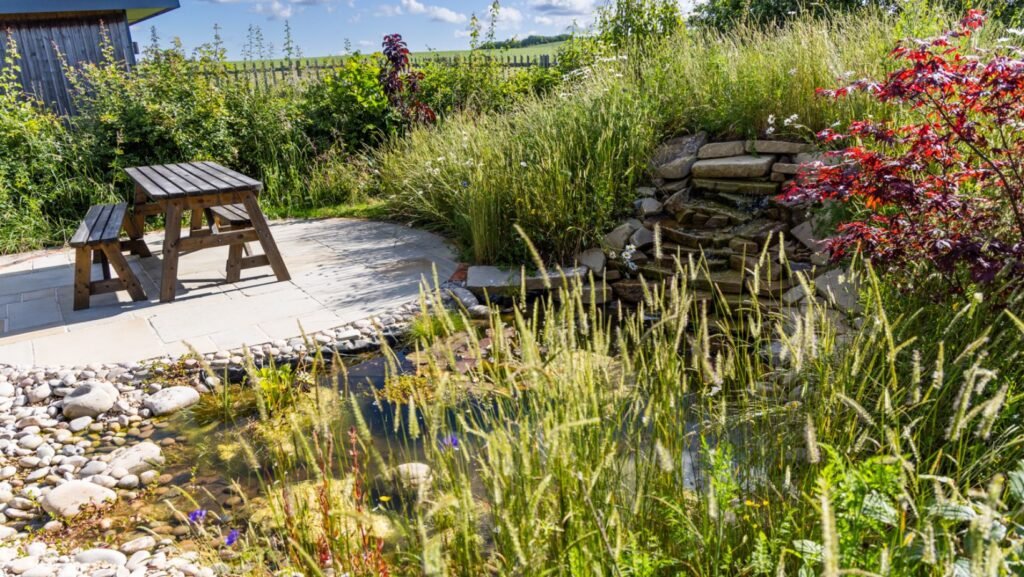
Retain – Hold rainwater where it falls.
One of the most effective ways to build resilience is to capture water as it runs off hard surfaces and store it for future use, with a rainwater harvesting system.
Did you know that you can collect enough rainwater from the roof a small shed in one year to fill 40 baths? And it’s free! Think of what you could do with all that water in your garden.
How to do it:
- Use above ground rain barrels or water butts to divert water from guttering and store it until needed. A small shed roof could fill one of these every month. They can be decorative or purely functional and are readily available from garden centres and online. A simple conversion kit is supplied with them which involves drilling a hole in the guttering down-pipe and connecting a flexible hose that drops into the barrel. Remember to set the barrel on a stand so that you can fit a watering can underneath the tap.
- Install a tank that stores anything from 5,000 to 30,000 litres of water either above or below ground to capture larger volumes of water that run off multiple surfaces such as building roofs, greenhouses or shed roofs. A pump can be installed to feed either directly into an irrigation system or just to a simple tap.

- These systems not only give you access to water during dry periods, they also reduce the strain on local drainage and treatment systems as they collect and store precious rainfall for future use, reducing your reliance on mains water. With the cost of 10 litres of mains water currently around 3p, a single water butt alone could save you over £800 a year.
- Consider building a sustainable drainage systems as a feature in your garden, if you have the space. Swales are shallow channels designed to collect and slowly drain water, either storing or transporting surface runoff during high rainfall. They can also enhance gardens as attractive features.
Recharge – help water sink into the soil.
Healthy soil is a living sponge. It stores water during storms and slowly releases it to plants during dry spells. But compacted or depleted soil struggles to do this well. Healthy soils also reduce surface runoff and erosion – helping gardens cope with sudden downpours.
How to do it:
- Improve soil structure with compost and leaf mould and other organic matter to increase its ability to absorb and hold water.
- Mulch beds with biodegradable options like composted bark or homemade compost. Mulch is best applied after rain or irrigation to lock in moisture. A depth of at least 5cm is ideal.
- Spread non-biodegradable mulches such as gravel or pebbles to reduce evaporation and keep roots cool. These mulches are better-suited to drought-tolerant plants as they tend to prefer poorer quality soil.
- Avoid compaction – reduce heavy footfall, and use no-dig or low-dig methods in beds.
- Plant trees and perennials with deep roots that break up soil, store moisture, and stabilise the land.
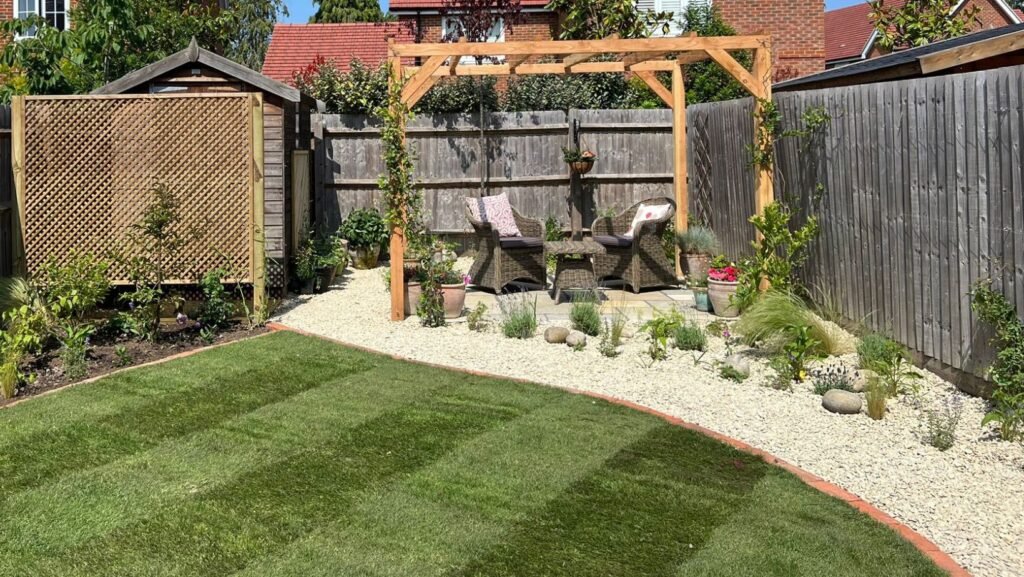
Reuse – Make every drop count.
In a drying climate, if you can, try to use water more than once, especially during periods of water restriction.
How to do it:
- Use greywater (from sinks, baths, or washing machines using eco detergents) to irrigate non-edible plants.
- Draw from ponds during dry spells – topping them up with rainwater rather than mains water.
Reusing water helps reduce pressure on mains supply and turns waste into a resource.
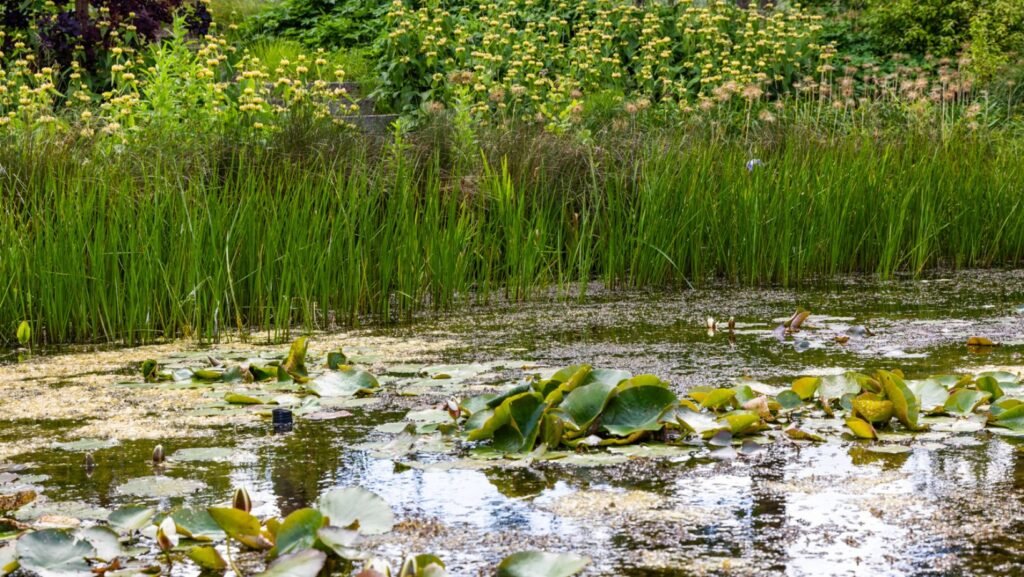
Restore – Design for biodiversity and balance.
Resilient gardens mimic natural systems. By planting for diversity and creating layered, living ecosystems, we help restore the natural ability of the land to manage water, reducing both drought and flood impacts
How to do it:
- Switch to drought-resilient planting – replace thirsty plants with plants such as lavender, rosemary, echinacea, sedum and ornamental grasses that thrive with less water. Drought-tolerant plants do need lots of drainage, which can be challenging on heavy clay soil, so improve beds with horticultural grit and lighter organic matter, such as leaf mould. You could also consider planting in raised beds where you can control soil composition and drainage.
- No-mow May and more. Traditional lawns are water-hungry and prone to stress so why not consider allowing grass to grow longer during dry periods to shade the soil and retain moisture.
- Transform lawns into meadows or flowering lawns. Introduce wildflowers or clover to create a flowering lawn that stays greener longer. Go further with a mini-meadow by laying wildflower turf or sowing wildflower mixes. Alternatively, allow wildflowers (and even some weeds) like buttercup and yarrow to flourish naturally.
- Though they’ll need water in year one, these deeper-rooted plants will be more drought-tolerant in the long term — and better at absorbing rainwater during storms.
- Layer your planting – with trees, shrubs, perennials and groundcovers – to create microclimates and reduce evaporation.
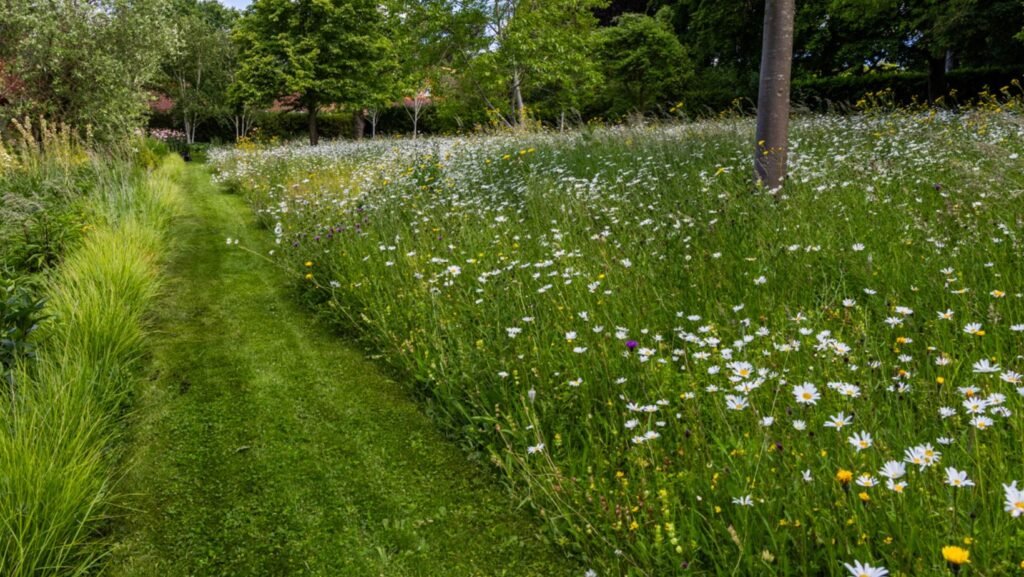
Unpredictable weather events are becoming more frequent. By designing with water in mind, we can create gardens that are more self-sustaining, more wildlife-friendly, and more beautiful through the seasons.
Want help building water resilience into your garden?
At GreenArt, we help our clients turn these ideas into reality, whether it’s installing a rainwater harvesting system, redesigning planting or transforming a lawn into a thriving mini-meadow.
Book your Garden Resilience Consultation today – Let’s create gardens that thrives, whatever the weather brings.








